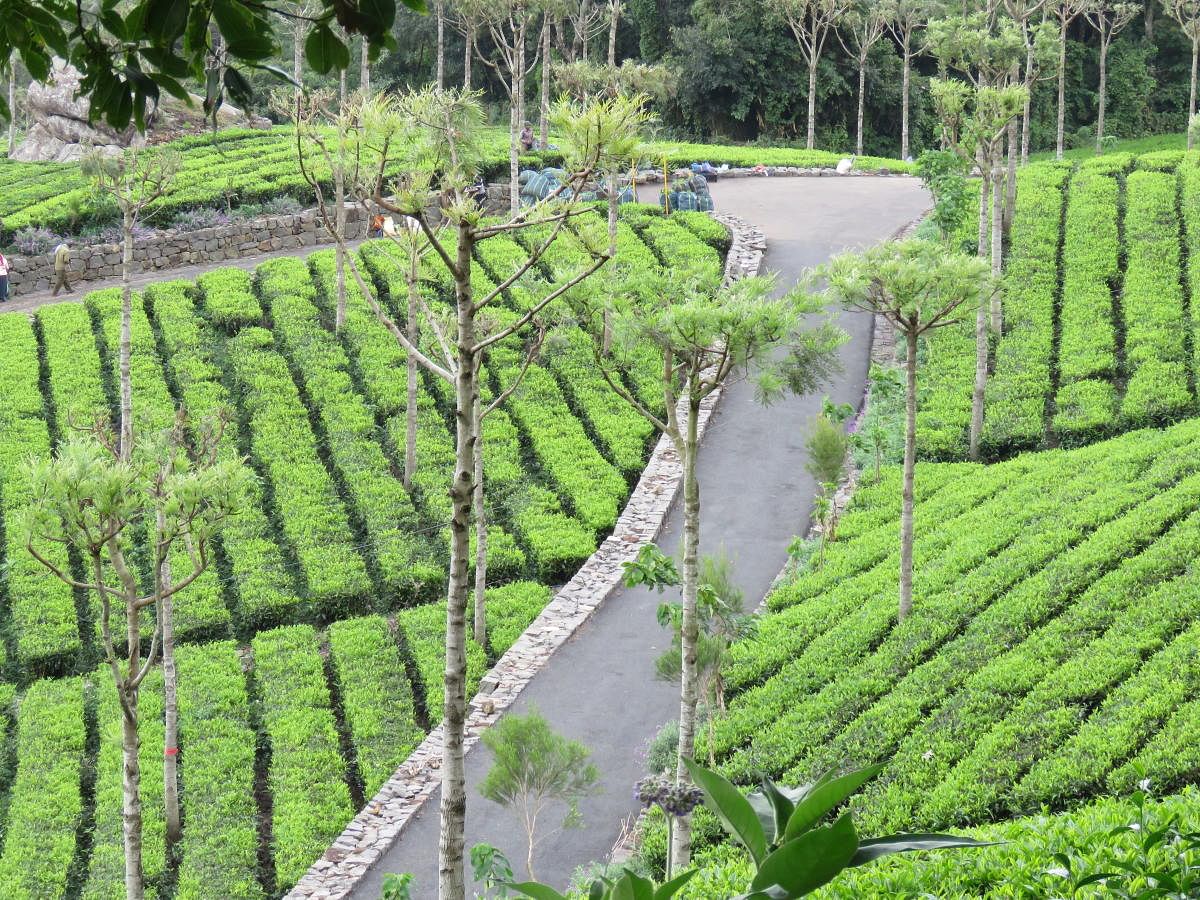
There was a distinct pleasantness in the air and a calm that was hard to miss as I exited the crowded, winding lanes of Ooty. Relieved to have waded my way through the hill station’s traffic successfully, I was visibly more relaxed as I headed to the oldest of the three hill stations in the Nilgiris, Kotagiri. As I reached closer to my destination, the verdant greenery and the lovely sight of the mist-clad blue mountains were like a breath of fresh air! I was glad to have arrived in the hills of the Kotas aka Kotagiri.
Located at a distance of about 30 km from Ooty and 23 km from Coonoor, Kotagiri is nestled at an altitude of just over 5,800 feet above sea level. A perfect weekend getaway from Bengaluru, Mysuru, Madurai and Coimbatore, it is a quaint town that is relatively less frequented than the more popular and touristy hill stations of Ooty and Coonoor. With carpets of lush green tea gardens and verdant landscapes, Kotagiri makes for an ideal rejuvenating break if you are looking to escape the urban humdrum and hustle bustle. With an enjoyable climate throughout the year, Kotagiri is a tad warmer than Ooty and Coonoor.
Colonial charm
History has it that Kotagiri was discovered in 1819 by two English officers of the erstwhile Madras government when they made their exploratory journey up the hills. They found the place to be similar to Europe in terms of climate and named it Kotercherry. Incidentally, around the same time, the then collector of Coimbatore, John Sullivan, discovered the hill station of Ootacamund (Ooty) in 1819 after a gruelling expedition on horseback that lasted six days.
A lover of the Blue mountains, John Sullivan constructed a house for himself in Kotagiri becoming the first European resident of the Nilgiris. He was the first to introduce horticulture in the district by encouraging the cultivation of English flowers, potatoes, barley and even tea. While he is largely responsible for the economic development of the region, he firmly believed that the Nilgiris belonged to the indigenous tribes of the region namely the Todas, Badagas, Irulas, Kotas and Kurumbas. The fact that he had their interest above everyone else set him at odds, many a time with the British. Nevertheless, John Sullivan continued to develop the district with the construction of Ooty Lake between 1823-1825, Stone House Hill and Government Arts College in Ooty.
While in Kotagiri, a visit to John Sullivan’s Pethakkal Bungalow which has now been converted to a memorial is a must visit. Located in Kannerimukku just 2 km off Kotagiri town, this brick red building with old-school white doors and windows is replete with oodles of old-world English charm. Restored and renovated in the 2000s, the building is a treasure trove of information on the life and times of John Sullivan and his contribution to the socio-economic development of the Nilgiris. The museum also houses rare photographs of the indigenous tribes of the region, including their native crafts and occupations practised by them.
For a cup of tea
If you are a lover of tea, Kotagiri is a haven and a leisurely stroll amidst the tea gardens is the best way to soak in the tranquil ambience of the town. There are several tea factories that are open to visitors, too. For the more adventurous sort, you can drive up to Kodanad, about 20 km away, for a breath-taking viewpoint. Incidentally, the tea estates of Kodanad that are known to produce the most superior variety of tea belonged to the late chief minister of the state, J Jayalalithaa who was also known to have owned a palatial bungalow amidst the gardens which she used as a summer retreat.
Catherine Falls that can be accessed by traversing through a tea estate is yet another attraction of Kotagiri. If you are a fan of history, heritage and architecture, St Luke’s Church in the town calls for a visit. With its majestic stone facade, brick-tiled sloping roof, arched windows and a vintage clock atop its tower, the 1867-built Luke’s Church in Kotagiri is a perfect symbol of the bygone era.
Relishing delicacies
While in the town, relish some mountain specialities like the delectable plum cakes, speciality teas and varkey available in the little bakeries near Johnstone Square. Shop for local handicrafts, including Toda tribal-embroidered shawls, stoles and cushion covers at Kotagiri Woman’s Cooperative Cottage Industrial Society at Ramachand Square. If you love handmade soaps, niche pottery and gourmet chocolates, Green Shop in the city centre is worth exploring. Hand-knitted sweaters, shawls, honey, tea and essential oils are also great souvenir options.